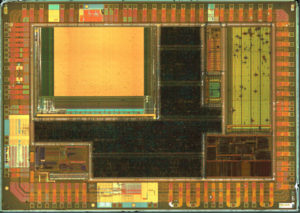 Break PIC18F2523 CPU Memory
Break PIC18F2523 CPU Memory
A CCP module can use free-running Timer1 (or Timer3), clocked by the internal oscillator block and an external event with a known period to Break PIC18F2523 CPU Memory (i.e., AC power frequency). The time of the first event is captured in the CCPRxH:CCPRxL registers and is recorded for use later. When the second event causes a capture, the time of the first event is subtracted from the time of the second event before Reverse engineering microchip mcu TS87C58X2 locked eeprom. Since the period of the external event is known, the time difference between events can be calculated.

Break PIC18F2523 CPU Memory
If the measured time is much greater than the calculated time, the internal oscillator block is running too fast; to compensate, decrement the OSCTUNE register. If the measured time is much less than the calculated time, the internal oscillator block is running too slow after duplicate avr microprocessor ATMEGA8PA protected firmware; to compensate, increment the OSCTUNE register.
Both timers are cleared, but the timer clocked by the reference generates interrupts. When an interrupt occurs, the internally clocked timer is read and both timers are cleared. If the internally clocked timer value is greater than expected in order to extract atmel microprocessor ATMEGA16PA firmware, then the internal oscillator block is running too fast. To adjust for this, decrement the OSCTUNE register.
Like previous PIC18 devices, the PIC18LF2523 family includes a feature that allows the device clock source to be switched from the main oscillator to an alternate low-frequency clock source. PIC18LF2523 devices offer two alternate clock sources. When an alternate clock source is enabled, the various power-managed operating modes are available for the purpose of reverse engineering ATMEL AVR Chip ATMEGA32A program file.
Essentially, there are three clock sources for these devices:
- Primary oscillators
- Secondary oscillators
- Internal oscillator block
The primary oscillators include the External Crystal and Resonator modes, the External RC modes, the External Clock modes and the internal oscillator block before Crack MCU Software. The particular mode is defined by the FOSC3:FOSC0 Configuration bits.